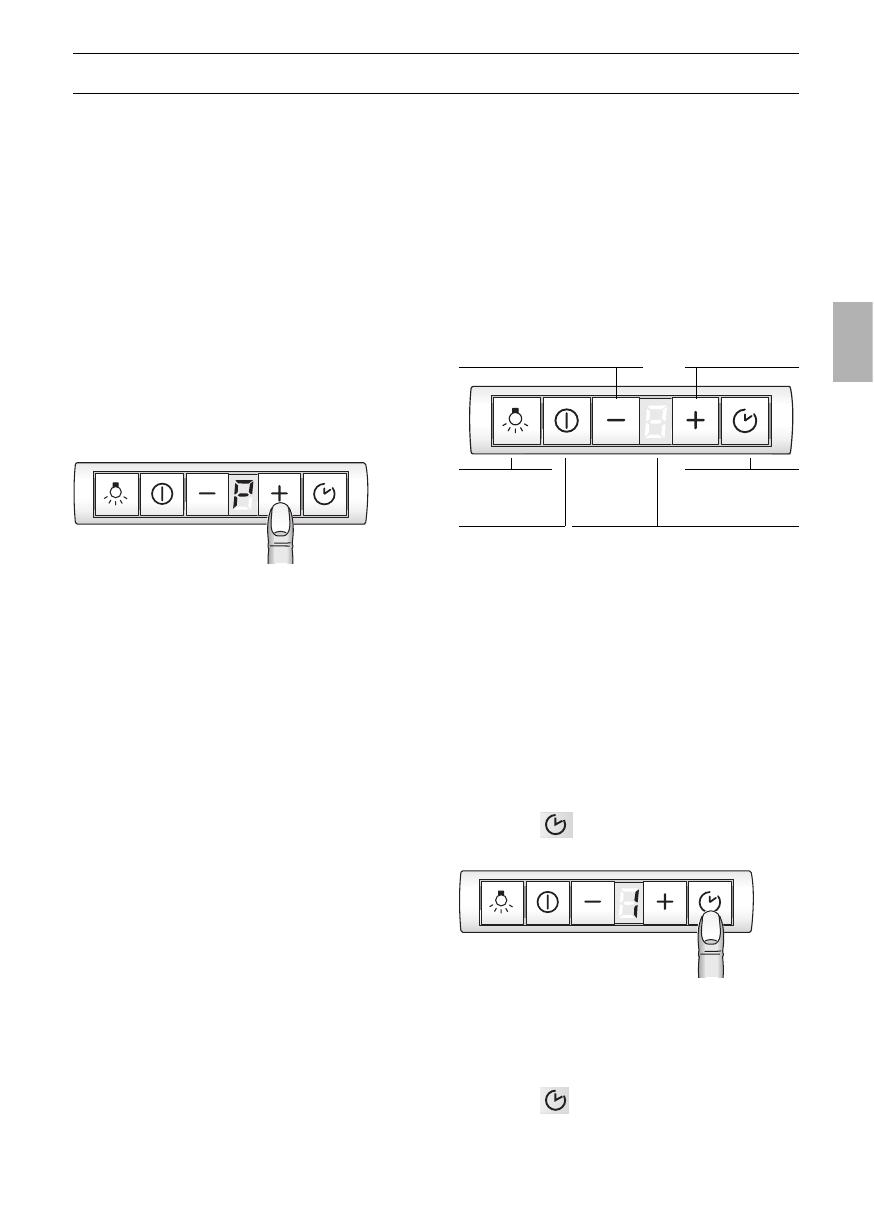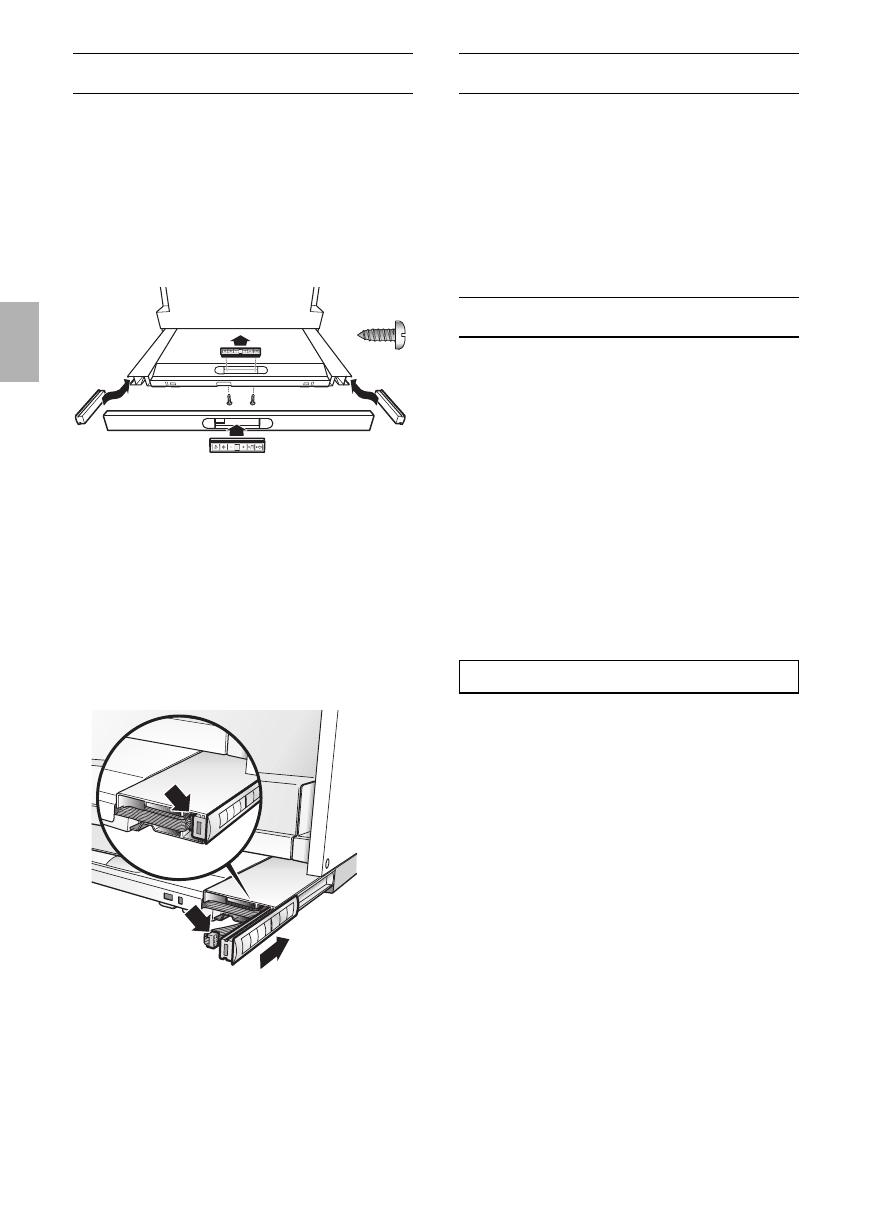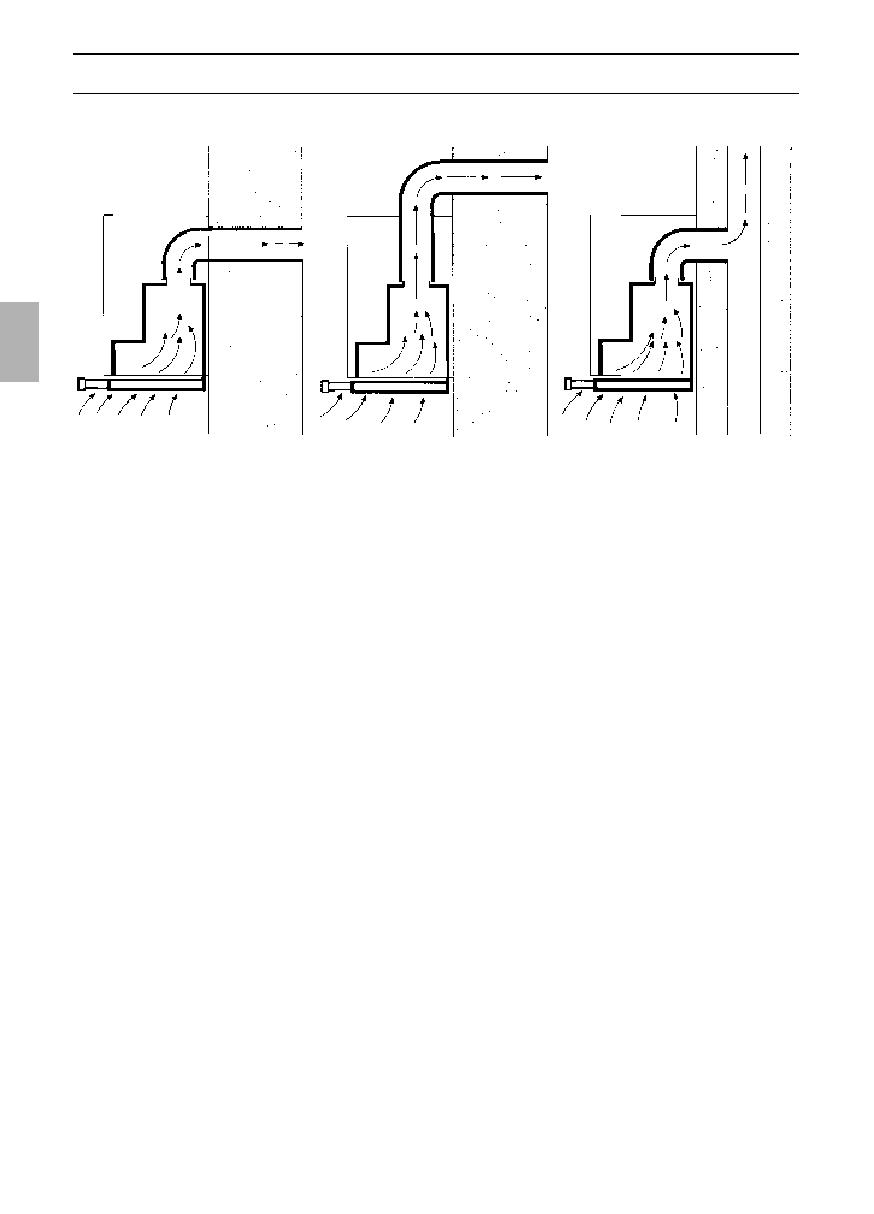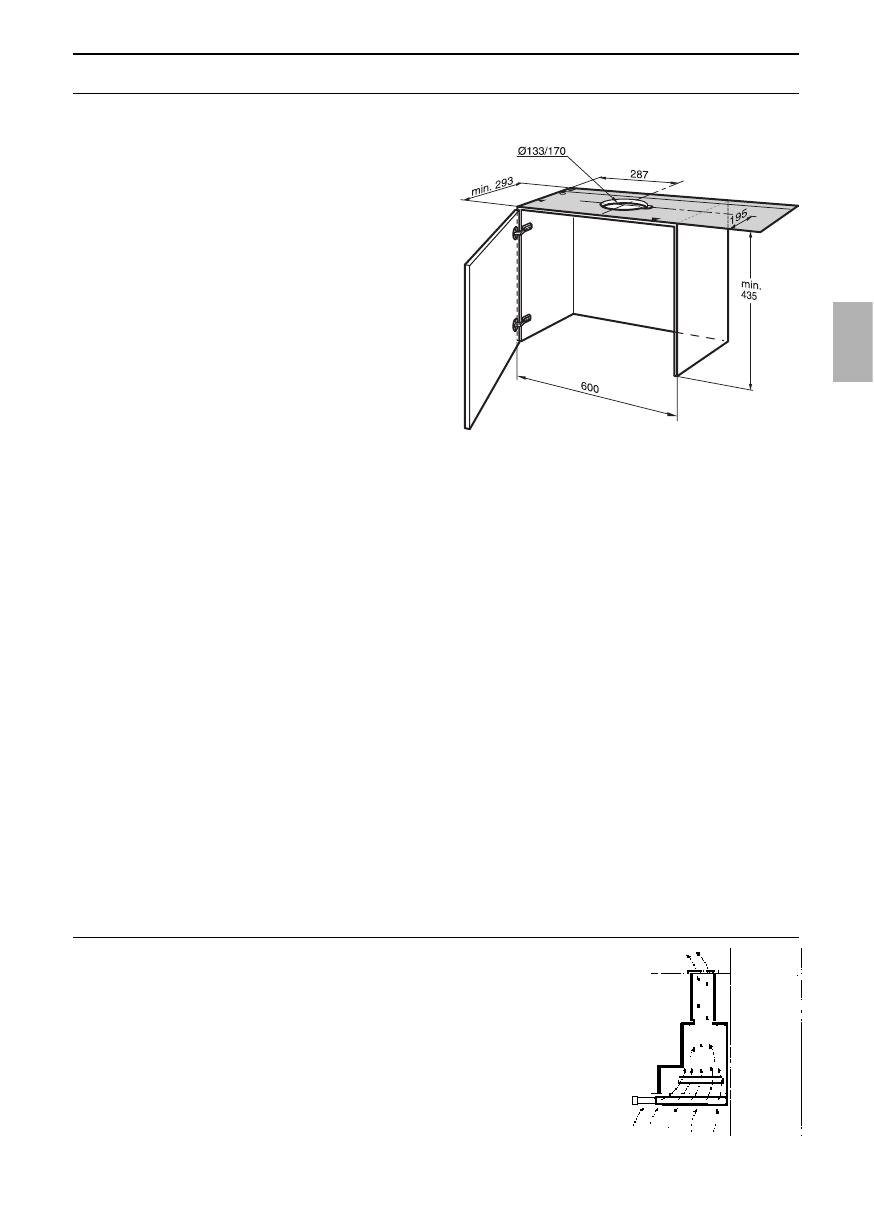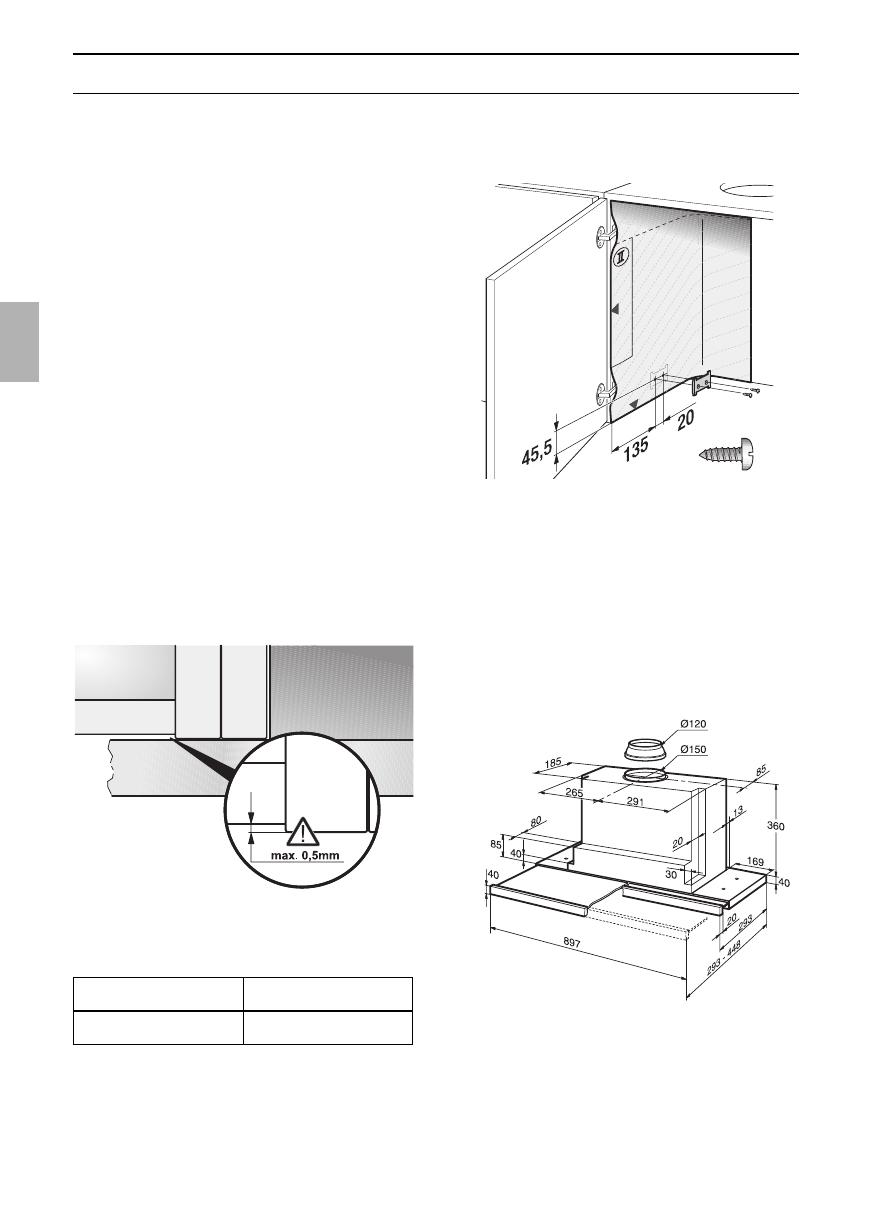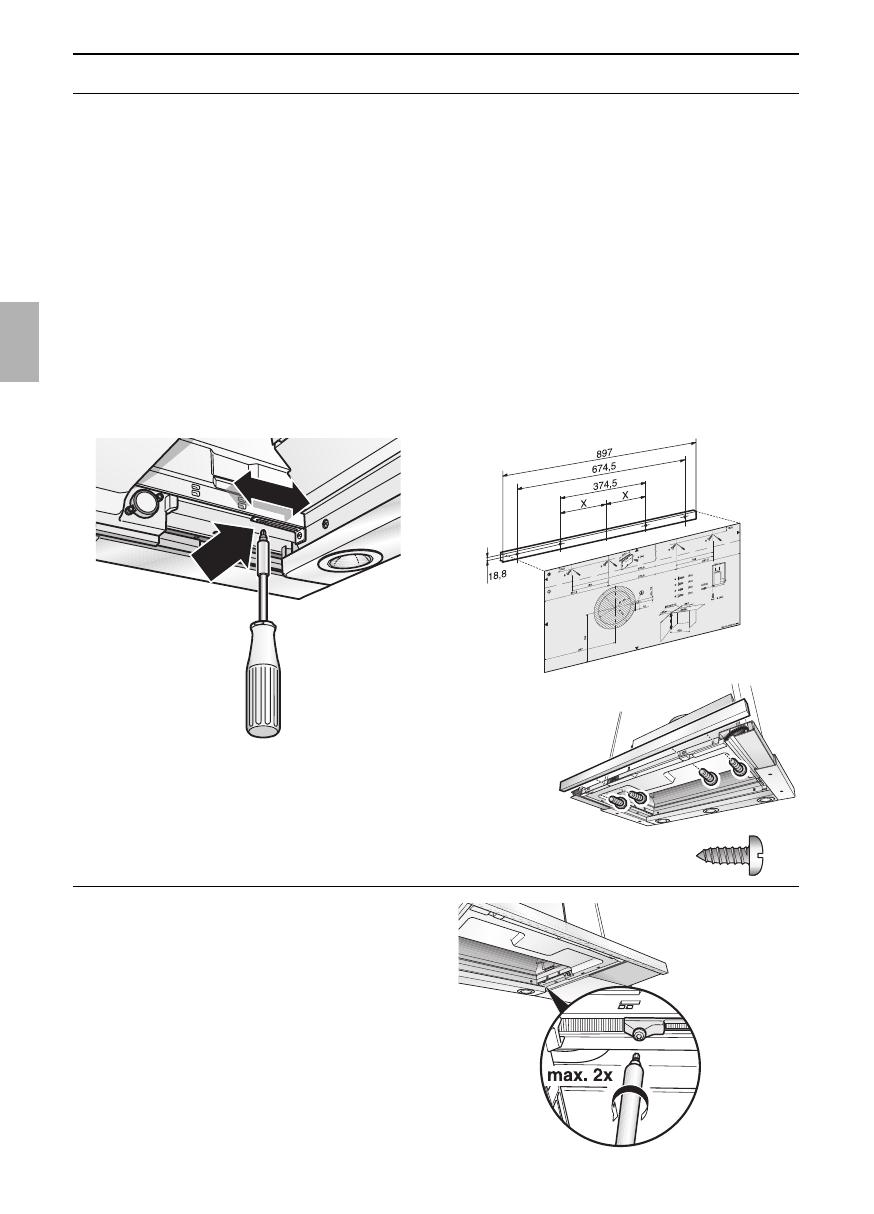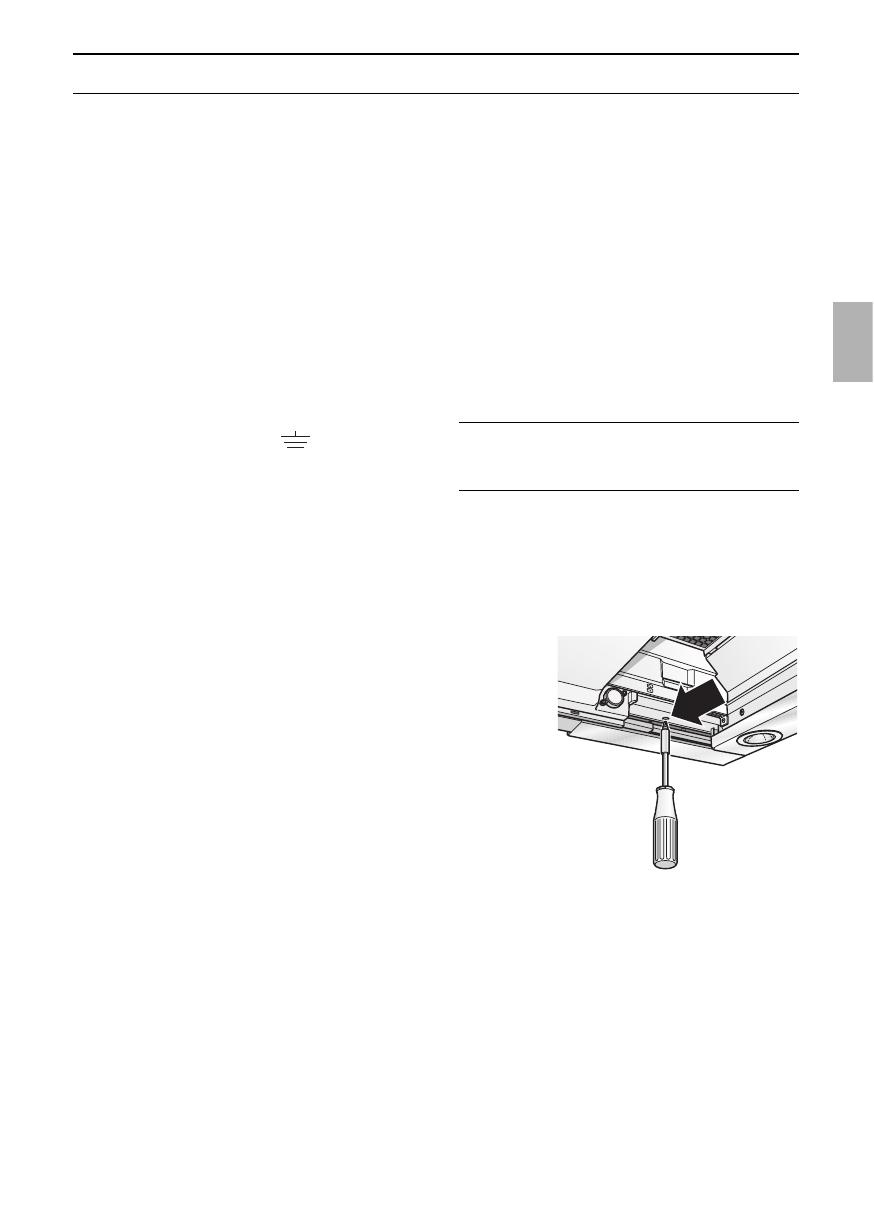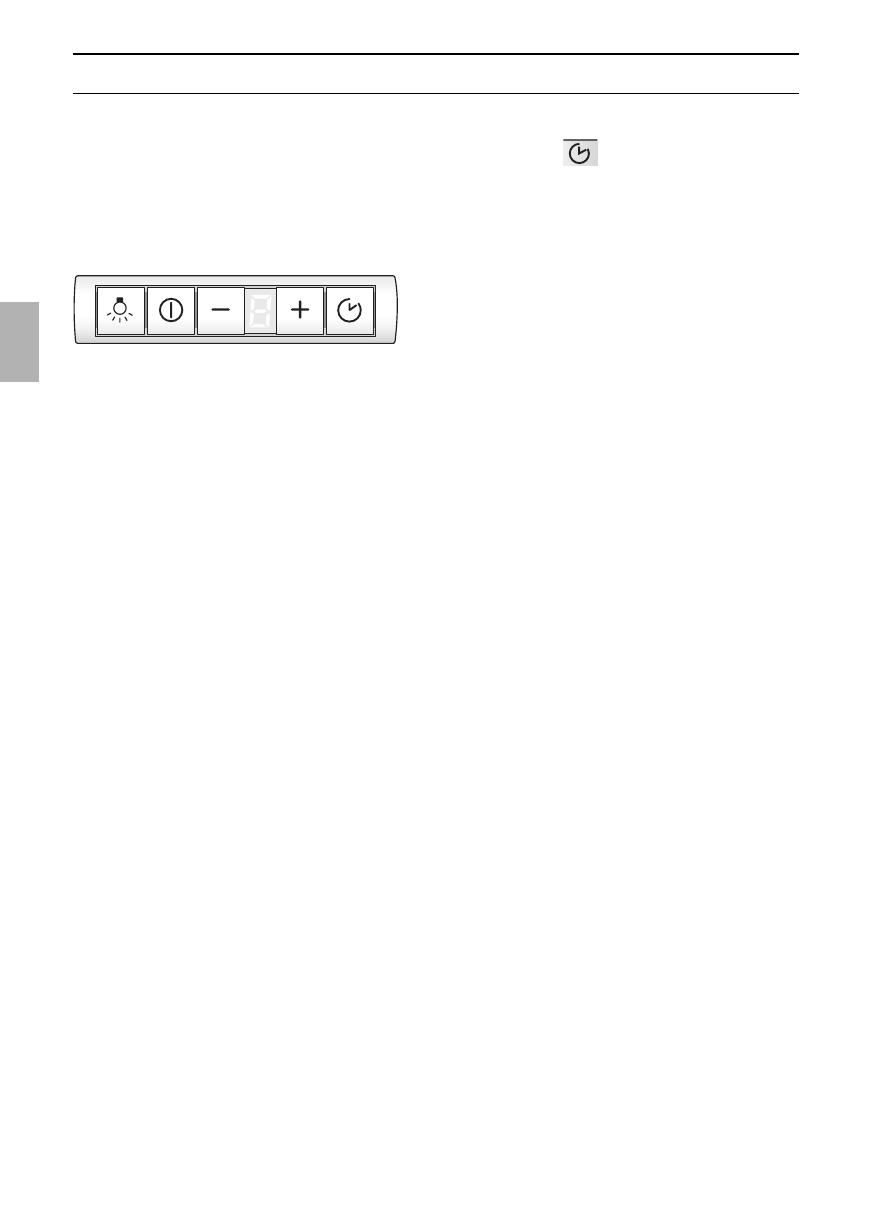27
Important information
Installation Instructions:
The installation of the extractor hood
above gas cooking devices, at a
minimum height of 650 mm – Fig. 1 – is
permitted provided that the following
nominal heat loads (Hs) are not exceeded:
❑
Gas cookers
Load of one hotplate max. 03.0 kW
Load of all hotplates max. 08.3 kW
Load of the oven max. 03.9 kW
❑
Gas hobs
Load of one hotplate max. 03.9 kW
Load of all hotplates max. 11.3 kW
❑
Gas ceramic hotplate
The nominal heat load specifications do
not apply to closed gas ceramic hobs.
Always observe the specifications of the
hob manufacturer.
❑ Solid-fuel cookers
The maximum nominal heat loads and
the minimum distance are the same as
for gas cookers.
The extractor hood must not be
installed over a solid fuel cooker – a
potential fire hazard (e.g. flying sparks) –
unless the cooker features a closed,
non-removable cover and all national
regulations are observed.
The smaller the gap between the
extractor hood and hotplates, the greater
the likelihood that droplets will form on the
underside of the extractor hood.
Old appliances are not worthless
rubbish. Valuable raw materials can be
reclaimed by recycling old appliances.
Before disposing of your old appliance,
render it unusable.
You received your new appliance in a
protective shipping carton. All packaging
materials are environmentally friendly and
recyclable. Please contribute to a better
environment by disposing of packaging
materials in an environmentally-friendly
manner.
Please ask your dealer or inquire at your
local authority about current means of
disposal.
The extractor hood can be used in
exhaust air or circulating air mode.
Always mount the extractor hood over
the centre of the hob.
Minimum distance between electric
hob and bottom edge of extractor hood:
430 mm, Fig. 1.
Additional information concerning gas
cookers:
When installing gas hotplates, comply
with the relevant national statutory
regulations (e.g. in Germany: Technische
Regeln Gasinstallation TRGI).
Always comply with the currently valid
regulations and installation instructions
supplied by the gas appliance
manufacturer.
Only one side of the extractor hood
may be installed next to a high-sided unit
or high wall. Gap at least 300 mm.


